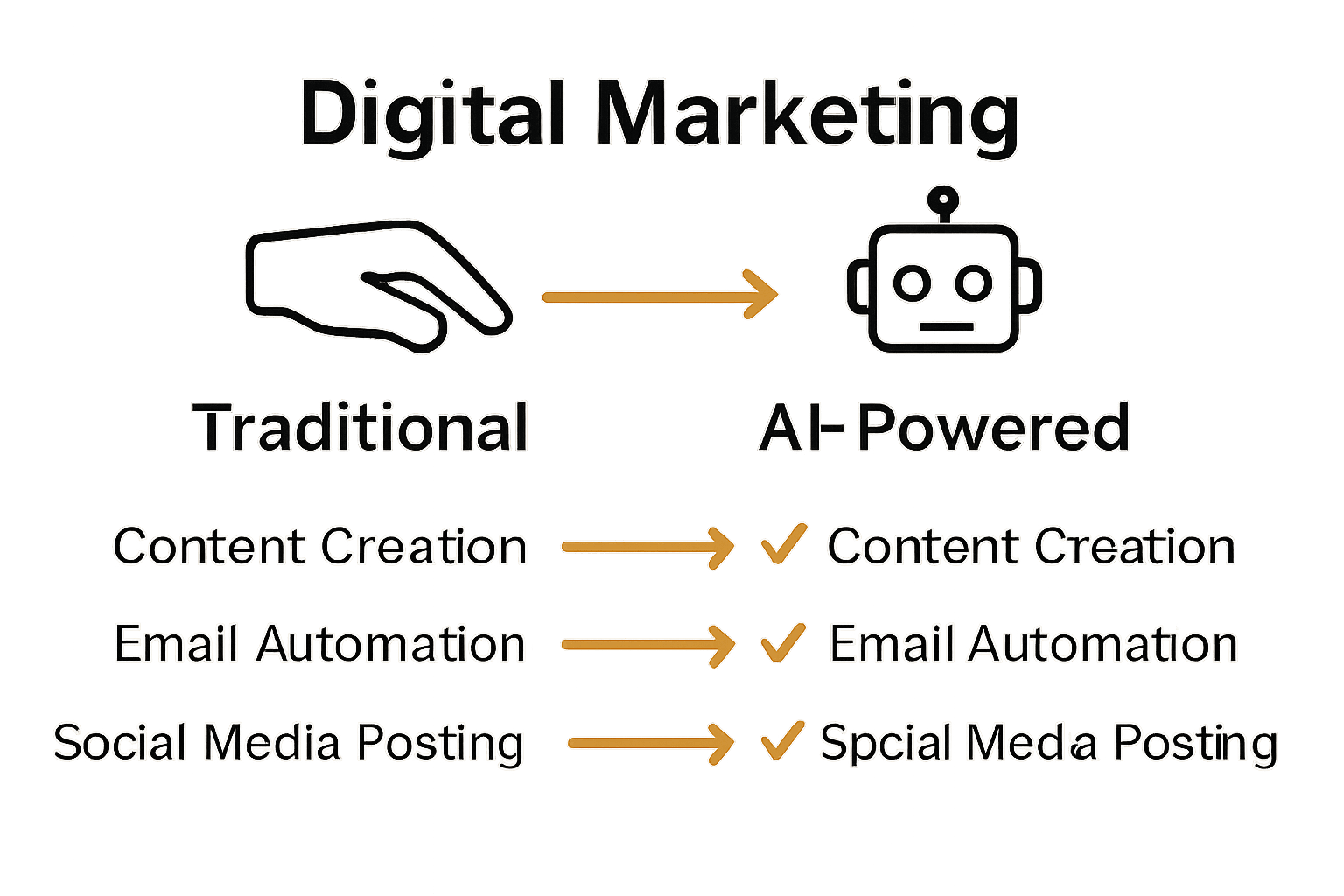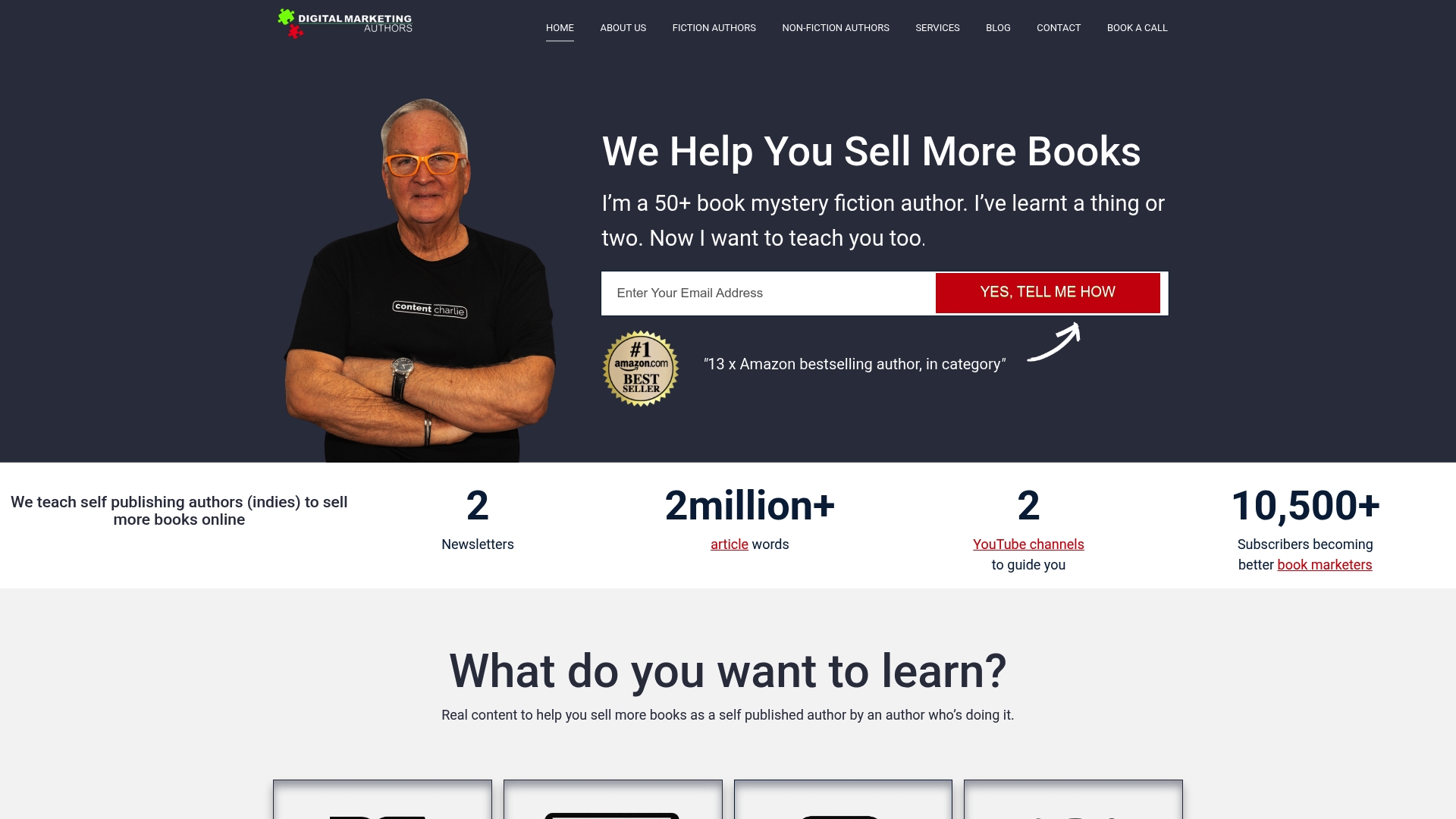- You are here:
- Home »
- Uncategorized »
- Digital Marketing for Authors Guide: Boost Book Sales Fast

Digital Marketing for Authors Guide: Boost Book Sales Fast
Did you know that over 80 percent of self-published authors struggle to sell even 100 books? Reaching the right readers takes more than just writing talent. Success as an author comes down to building a powerful brand and using modern marketing strategies that actually work. Whether you’re looking to grow your audience or turn your passion into steady book sales, these proven steps guide you toward real and measurable results.
Table of Contents
- Step 1: Define Your Author Brand And Target Audience
- Step 2: Build Automated Email Sequences For Readers
- Step 3: Leverage Social Media And Content Platforms
- Step 4: Utilize AI Tools To Streamline Marketing Tasks
- Step 5: Measure Campaign Results And Optimize Strategies
Quick Summary
| Key Point | Explanation |
|---|---|
| 1. Define Your Author Brand | Clearly identify your unique storytelling voice and ideal readers to tailor your marketing efforts. |
| 2. Build Engaging Email Sequences | Create automated email sequences to maintain reader interest and provide them with valuable content. |
| 3. Select Effective Social Media Platforms | Focus on 2-3 platforms where your target audience is most active to boost engagement. |
| 4. Utilize AI Tools for Efficiency | Streamline your marketing tasks with AI tools to save time and enhance content creation. |
| 5. Measure and Optimize Strategies | Regularly analyze marketing metrics to improve your strategies and connect with your readers effectively. |
Step 1: Define Your Author Brand and Target Audience
In this crucial first step, you will craft a strategic roadmap that transforms your writing career by clearly identifying who you are as an author and exactly who will read your books. According to Harvard Business School, identifying your target audience is essential for tailoring marketing strategies that meet specific consumer preferences.
Starting your author brand journey means understanding your unique storytelling voice and the specific readers who will connect most deeply with your work. Ask yourself: What makes my writing different? What themes or genres define my storytelling? What emotional experience do I want readers to have?
To define your target audience, create a detailed reader persona. Go beyond basic demographics like age and gender. Consider deeper characteristics like reading habits, lifestyle preferences, emotional triggers, and specific interests that align with your book’s themes. Nebraska Library Commission suggests that focusing on a specific audience ensures your marketing efforts are directed towards those most likely to engage.
Your reader persona might look like this: A 35-45 year old professional who loves psychological thrillers, enjoys complex character development, and seeks escapist entertainment after long workdays. By getting this specific, you can craft marketing messages that speak directly to their desires and pain points.
Pro Tip: Don’t try to appeal to everyone. The most successful authors know their niche and speak directly to that audience.
Next, you will align your author brand visuals and messaging with this target reader profile to create a cohesive marketing strategy that attracts and retains your ideal readers.
Step 2: Build Automated Email Sequences for Readers
In this step, you will learn how to create powerful automated email sequences that keep your readers engaged and excited about your books. According to BAIPA, implementing autoresponder series enables authors to maintain consistent communication with readers, providing timely updates and fostering engagement.
Start by mapping out a strategic email sequence that takes readers on a journey. Your sequence should include a welcome email, content that provides value, and periodic updates about your books or writing process. Fund Journalism suggests that automated email series can build reader loyalty by delivering relevant content over time.
Design your email sequence with these key components:
- Welcome email introducing yourself and your writing
- Behind the scenes content about your book writing process
- Exclusive excerpts or sneak peeks of upcoming work
- Personal stories that connect readers to your author brand
- Periodic book launch announcements and special offers
Choose an email marketing platform that allows automation and segmentation. This will help you track reader interactions and customize your approach based on their interests and engagement levels.

Pro Tip: Aim for quality over quantity. Send emails that truly provide value rather than bombarding readers with frequent communications.
In the next section, you will learn how to optimize these email sequences for maximum reader engagement and book sales.
Step 3: Leverage Social Media and Content Platforms
In this step, you will transform your social media presence into a powerful book marketing engine that connects directly with potential readers. Pressbooks highlights that utilizing social media platforms allows authors to reach targeted audiences, engage with readers, and build brand awareness through consistent content sharing.
Select 2-3 social media platforms where your target readers are most active. For fiction writers, this might mean Instagram for visual storytelling, Twitter for quick updates, and Facebook for community building. Apps confirms that social media marketing enables direct interaction with the digital audience, facilitating real-time engagement and feedback.
Create a content strategy that mixes personal insights, writing progress, book teasers, and reader interaction. Your content should feel authentic and give readers a peek behind the curtain of your writing world. Share:
- Writing workspace snapshots
- Character development insights
- Book research background
- Short story excerpts
- Reader Q&A sessions
Consistent posting is key. Develop a content calendar that keeps you accountable and helps you maintain a steady stream of engaging posts that reflect your author brand.
Pro Tip: Quality trumps quantity. Focus on creating meaningful connections rather than chasing follower numbers.
In the next section, you will learn how to track and optimize your social media efforts for maximum reader engagement.
Step 4: Utilize AI Tools to Streamline Marketing Tasks
In this step, you will discover how artificial intelligence can transform your marketing workflow and save precious time for writing. Writer Response Theory reveals that AI writing and text generation tools can assist in creating SEO-optimized content, enhancing online visibility and reducing manual effort.
AI tools offer incredible opportunities for authors to automate and optimize marketing tasks. EDIIGOA confirms that digital tools and platforms support entrepreneurs in executing effective marketing strategies and managing brand promotion.
Explore AI tools for these key marketing areas:
- Content creation and blog post drafting
- Social media post generation
- Email subject line optimization
- Book description and blurb writing
- Audience targeting and segmentation
- Keyword research for book metadata
Start by identifying repetitive marketing tasks that consume significant time. Choose AI tools that integrate smoothly with your existing workflow and provide clear value. Experiment with different platforms to find the most intuitive and effective solutions for your specific author brand.

Pro Tip: Always review and personalize AI generated content. Use these tools as assistants not replacements for your unique voice.
In the next section, you will learn how to measure and analyze your marketing efforts to continually improve your book sales strategy.
Step 5: Measure Campaign Results and Optimize Strategies
In this final step, you will transform raw marketing data into actionable insights that continuously improve your book sales strategy. Pressbooks reveals that analyzing customer behavior and preferences through data insights allows for the optimization of marketing efforts and personalization of strategies.
EDIIGOA confirms the importance of setting specific, measurable goals and utilizing digital tools to assess marketing performance and make informed strategic decisions.
Track these critical marketing metrics for your author brand:
- Book sales conversion rates
- Email open and click through rates
- Social media engagement percentages
- Website traffic from marketing campaigns
- Reader interaction and feedback
- Ad spend versus book revenue
Use analytics tools that provide comprehensive insights into your marketing performance. Look for patterns in reader behavior. Which content generates the most engagement? What times of day do your posts perform best? Which marketing channels drive the most book sales?
Pro Tip: Review your metrics monthly. Small consistent improvements compound into significant results over time.
By systematically measuring and refining your approach, you will continuously enhance your marketing strategy and connect more effectively with your ideal readers.
Here’s a summary comparing each step of the author book marketing strategy:
| Step | Main Focus | Key Activities |
|---|---|---|
| Define Your Author Brand and Target Audience | Identify brand and target readers | Create reader personas Clarify author voice Align brand messaging |
| Build Automated Email Sequences | Engage readers via email | Create welcome series Share exclusive content Announce new books |
| Leverage Social Media and Content Platforms | Grow audience and interaction | Select platforms Share behind-the-scenes Host Q&A sessions |
| Utilize AI Tools to Streamline Marketing Tasks | Automate and save time | Use AI for content Automate emails Optimize book blurbs |
| Measure Campaign Results and Optimize Strategies | Improve marketing performance | Track key metrics Analyze engagement Refine strategies |
Unlock Your Author Brand and Boost Book Sales Today
Struggling to define your unique author brand or build email sequences that truly engage readers Can you imagine having AI tools at your fingertips to cut hours of marketing work while still connecting deeply with your ideal audience This guide highlights these exact challenges and goals many authors face when trying to grow loyal readers and increase book sales fast
At DigitalMarketingAuthors.com, founded by 13x #1 Amazon bestselling author C T Mitchell, we specialize in helping authors like you master every step from crafting magnetic email sequences to leveraging AI-powered strategies that save time and amplify your reach

Start turning your writing passion into a profitable author brand now by exploring proven systems that automate book marketing without relying on luck or big publishers Visit DigitalMarketingAuthors.com today to join a community where indie authors grow reader loyalty, improve email engagement, and optimize social media impact. Your readers are waiting and success is within reach.
Frequently Asked Questions
How can I define my author brand and target audience effectively?
Start by identifying your unique writing style and the specific themes you explore. Create a detailed reader persona that includes not only demographics but also reading habits and emotional triggers to tailor your marketing messages accordingly.
What should be included in my automated email sequences for readers?
Your automated email sequences should include a welcome message, valuable content, behind-the-scenes insights, and updates on your books. Aim to engage your readers regularly, ideally with a sequence that evolves over four to six weeks.
How can I use social media to boost my book sales?
Select 2-3 social media platforms where your target readers are most active, and share engaging content like writing progress updates and personal insights. Create a content calendar to ensure you post consistently, helping you build connections and followers over time.
What AI tools can I use to streamline my marketing tasks?
Explore AI tools for automating tasks like content creation, social media post generation, and email optimization. Start by identifying repetitive tasks that consume time and test tools that can help you improve efficiency and save hours each week.
How do I measure the success of my digital marketing campaigns?
Track critical metrics like book sales conversion rates, email open rates, and social media engagement percentages. Regularly analyze these metrics, aiming for monthly reviews to identify trends and refine your strategies for better results.
How can I optimize my strategies to continuously improve book sales?
By systematically measuring your marketing efforts and analyzing reader behavior, you can identify what’s working and what isn’t. Set aside time each month to evaluate your campaigns, make necessary adjustments, and implement changes that enhance engagement and sales.
Recommended
- Digital Marketing Tips for Authors to Boost Book Sales – DigitalMarketingAuthors.com
- What is Digital Marketing? Understanding Its Importance

